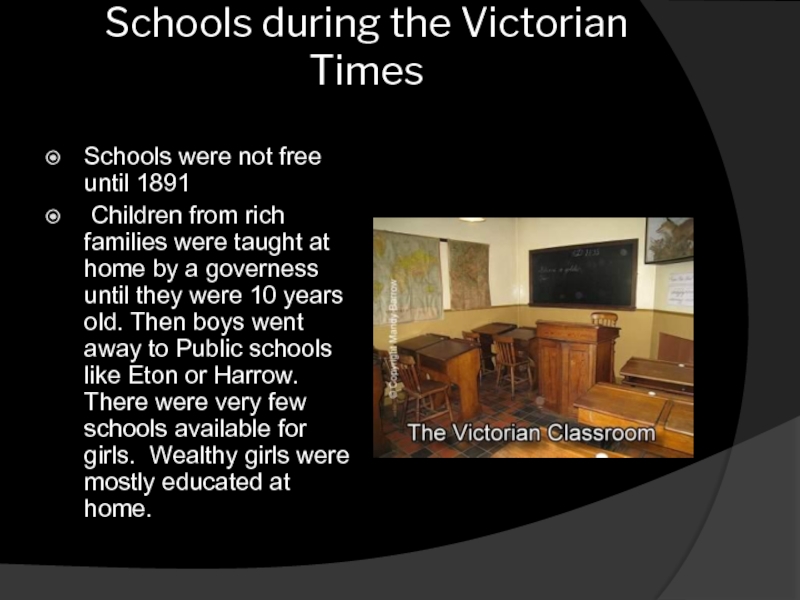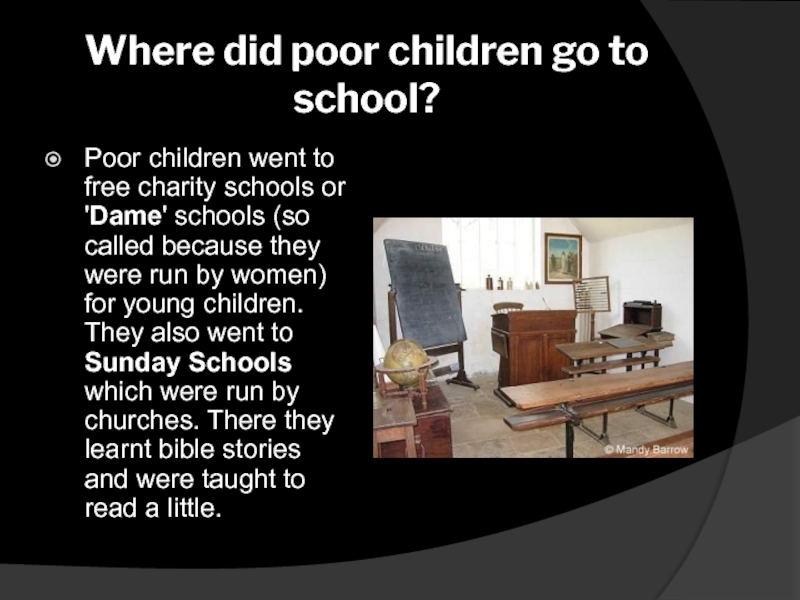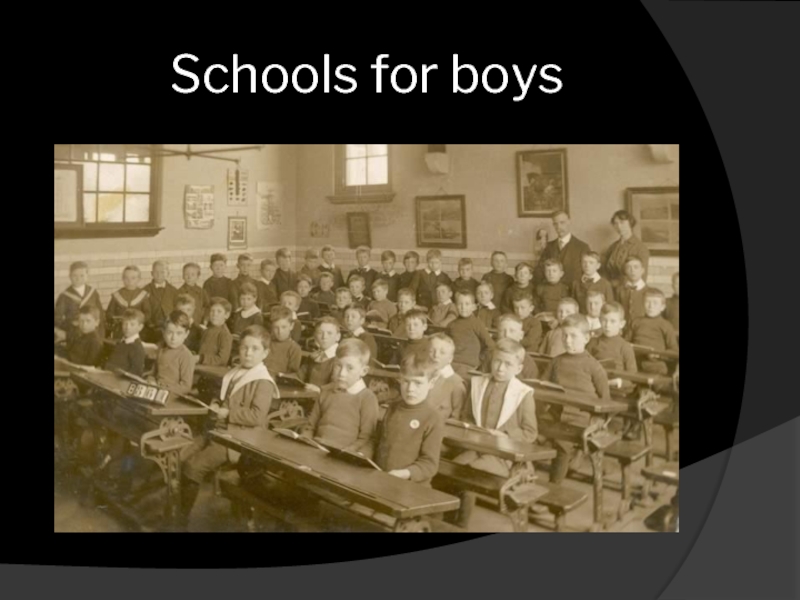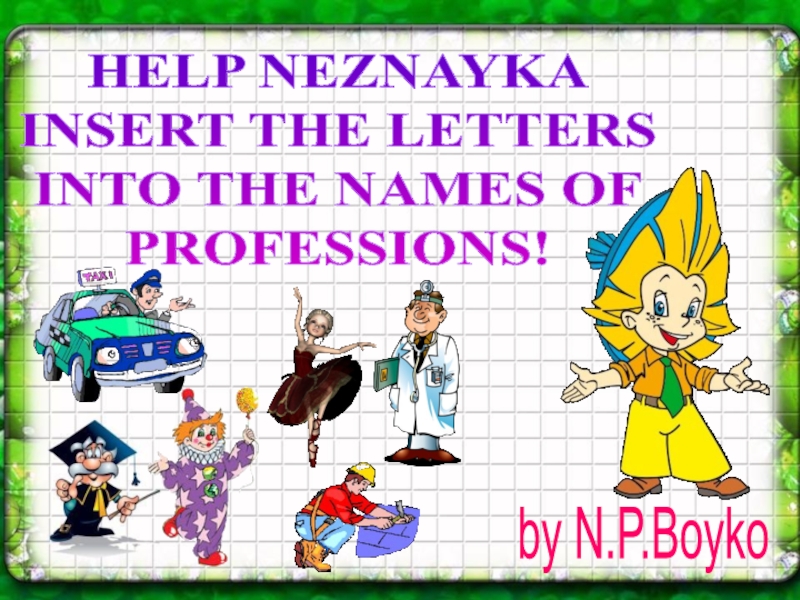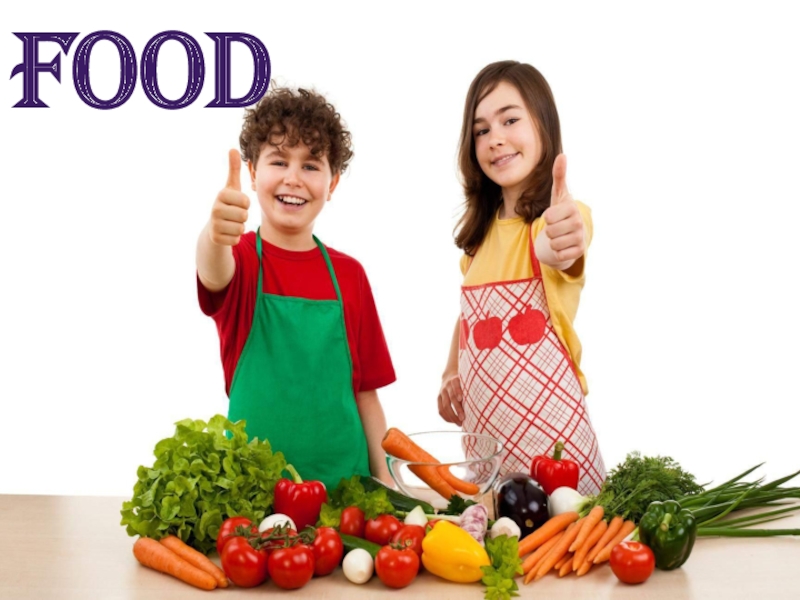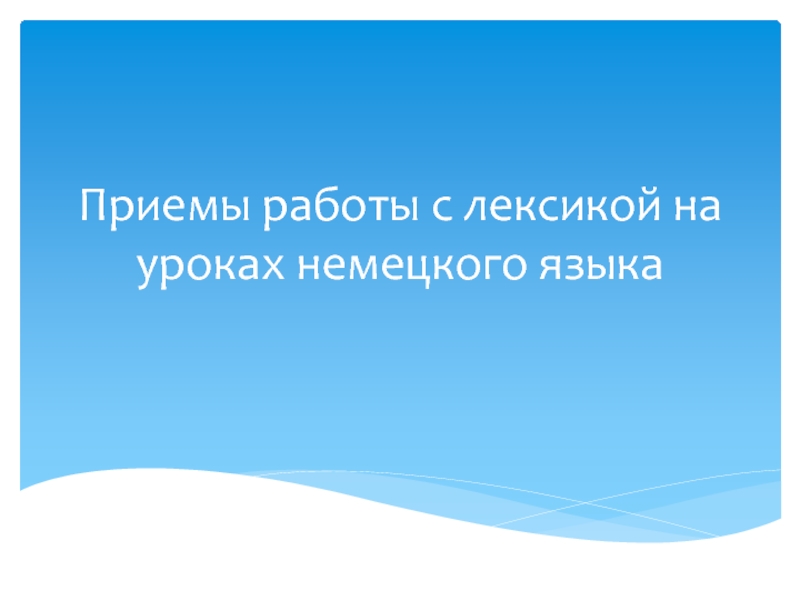Разделы презентаций
- Разное
- Английский язык
- Астрономия
- Алгебра
- Биология
- География
- Геометрия
- Детские презентации
- Информатика
- История
- Литература
- Математика
- Медицина
- Менеджмент
- Музыка
- МХК
- Немецкий язык
- ОБЖ
- Обществознание
- Окружающий мир
- Педагогика
- Русский язык
- Технология
- Физика
- Философия
- Химия
- Шаблоны, картинки для презентаций
- Экология
- Экономика
- Юриспруденция
Children In Victorian Times 8 класс
Содержание
- 1. Children In Victorian Times 8 класс
- 2. Do you know what Victorian time is?
- 3. When was Queen Victoria born? Queen Victoria
- 4. Where was Queen Victoria born? Victoria was born at Kensington Palace, London.
- 5. What name was Victoria christened as? Victoria
- 6. Childhood and School Victoria's first language was
- 7. When did Victoria become Queen? Queen Victoria
- 8. Who did Queen Victoria marry? At the
- 9. Why did Queen Victoria wear black? Her
- 10. Where did Queen Victoria live? Queen Victoria
- 11. What hobbies did Queen Victoria have? Queen
- 12. What was it like living in the
- 13. How did Britain change during her reign?
- 14. Did you know?Queen Victoria was 1.52 m
- 15. What was it like for children living
- 16. Children from rich familiesAte healthy foodHad clean
- 17. Working childrenAt the age of 5 or
- 18. In some poor families mothers had to sell their children
- 19. Where did children work?In factoriesAs chimney sweepersIn coal minesIn the streetsIn workhousesIn farms
- 20. Schools during the Victorian Times
- 21. Where did poor children go to school?Poor
- 22. What were the schools like?There could be
- 23. What did the schools teach?Typical lessons at
- 24. What was a Victorian school day like?The
- 25. Why did Victorian children write on slates?Paper
- 26. Children at a London 'ragged school' in 1853
- 27. Harrow School in 1862
- 28. Dame school
- 29. Schools for boys
- 30. Schools for girls
- 31. PE lessons
- 32. Скачать презентанцию
Do you know what Victorian time is? 1819-1901She ruled for 64 years (1837 – 1901)Victoria was Queen of the United Kingdom of Great Britain and Ireland and empress of India. Her
Слайды и текст этой презентации
Слайд 2Do you know what Victorian time is?
1819-1901
She ruled for 64
years (1837 – 1901)
of Great Britain and Ireland and empress of India. Her reign was the longest of any monarch in British historyСлайд 3When was Queen Victoria born?
Queen Victoria was born on the
24 May in 1819.
Her father died eight months after
she was born. Слайд 5What name was Victoria christened as?
Victoria was christened 'Alexandrina Victoria'.
However, from birth she was formally addressed as Her Royal
Highness Princess Victoria of Kent.Слайд 6Childhood and School
Victoria's first language was German. At three years
old she learnt to speak English and French. Later she
learnt to speak Hindustani because she was ruler of India as well.Victoria didn't go to school. She was taught at home. As well as learning languages, Victoria studied history, geography, and the Bible. She was taught how to play the piano and learned how to paint, a hobby that she enjoyed into her 60s.
Слайд 7When did Victoria become Queen?
Queen Victoria came to the throne
when she was only 18 years of age on June
20, 1837. Her coronation was a year later on 28 June 1838.Слайд 8Who did Queen Victoria marry?
At the age of 21, Victoria
married her cousin Albert, a German Prince. They married on
the 10th February 1840 at the Chapel Royal in St. James's Palace.Victoria had nine children, 40 grand-children and 37 great-grandchildren, scattered all over Europe. Most of Queen Victoria's children married into other royal families of Europe.
Слайд 9Why did Queen Victoria wear black?
Her husband Albert died in
1861 at the young age of 42. She mourned his
death for almost 10 years. For the rest of her reign she wore black.Слайд 10Where did Queen Victoria live?
Queen Victoria had many homes. She lived
in Buckingham Palace, Windsor Castle, Osborne House and Balmoral Castle.
Queen Victoria was the first monarch to live in Buckingham Palace.
Слайд 11What hobbies did Queen Victoria have?
Queen Victoria loved singing and
she enjoyed painting and drawing. She loved going to the
opera.Слайд 12What was it like living in the Victorian times?
There was
no electricity, instead gas lamps or candles were used for
light.There were no cars. People either walked, travelled by boat or train or used coach horses to move from place to place.
Слайд 13How did Britain change during her reign?
Britain became the most
powerful country in the world, with the largest empire.
The
number of people living in Britain more than doubled. Factories and machines were built and new towns grew up, changing the landscape and the ways people lived and worked.
Railways were built and people could travel easily around the country for the first time.
Industrial Revolution
Слайд 14Did you know?
Queen Victoria was 1.52 m tall
Queen Victoria's
family nickname was 'Drina‘
Victoria was known as the "Grandmother of
Europe" because many of her children and grandchildren married into the royal families of other European countriesСлайд 15What was it like for children living in Victorian times?
It
all depended on their family…
Children from working class families ate
poor food, worked long hours, lived in terrible conditions, died of diseasesСлайд 16Children from rich families
Ate healthy food
Had clean and good clothes
Didn’t
need to work
Went on holidays
Had expensive toys
Слайд 17Working children
At the age of 5 or 6 children started
to work
Children worked very long hours with little breaks and
no fresh airThey often worked in dangerous conditions
They were paid very little
Слайд 19Where did children work?
In factories
As chimney sweepers
In coal mines
In the
streets
In workhouses
In farms
Слайд 20
Schools during the Victorian Times
Schools were not free until 1891
Children from rich families were taught at home by a
governess until they were 10 years old. Then boys went away to Public schools like Eton or Harrow. There were very few schools available for girls. Wealthy girls were mostly educated at home.Слайд 21Where did poor children go to school?
Poor children went to
free charity schools or 'Dame' schools (so called because they
were run by women) for young children. They also went to Sunday Schools which were run by churches. There they learnt bible stories and were taught to read a little.Слайд 22What were the schools like?
There could be as many as
70 or 80 pupils in one class, especially in cities.
The teachers were very strict.In many Victorian schools pupil-teachers helped with the teaching. The pupil-teachers were boys and girls of 13 and over. After five years they could themselves become teachers.



















